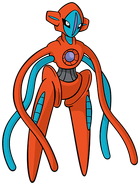Despite my clear preference for various editions of Champions / Hero System for super-heroic gaming, I've never really stopped looking for several ideal systems. It's a big topic, and I've not mind-mapped this all out, so if this seems a bit scatterbrained, bear with me.
Why I like Champions
1. I like granularity of the system.
While DC Heroes / MEGS is a fine system, especially with the logarithmic progression of the APs and the use of benchmarks to help streamline play, I always felt that it needed a smidge more granularity to address issues like Batman's strength on the lower end, and the huge ranges that begin appearing beyond the double-digit values.
I also enjoy having a wide variety of skills, especially Professional Skills and Knowledge Skills, that can cover very specific skill-sets. Penalty Skill Levels that allow you to ignore very specific (character history-based) penalties.
I also love being able to create one-shot powers (important to character concept) that may be extremely cheap, and almost never used -- but do add the overall concept just by their presence.
2. I like the flexibility of the system.
I've written about how you can build "exactly the character you want" in the past, and it's one of the things that are regularly commented on about the system.
In particular, the highlights include:
- being able to load up on a variety of Professional Skills and Knowledge Skill Levels (so you're familiar with theoretical and practical aspects of something you purport to be an expert on);
- playing with special effects and power advantages like (variable special effect, variable limitation, and variable advantage) to milk the utility of a certain kind of defined power;
- covering science fiction, fantasy, and super-heroic tropes with a single, unified powers and skills system
3. I like the open-endedness of the system
While you can gauge power levels based on the active points, real points, and total points in powers, characteristics, and abilities, there's no real limit on them (except for arbitrary, and usually negotiable ones, based on the campaign).
I don't really like the idea of having a fixed range of power ranks (which is where clever systems like Mutants & Masterminds and even the classic TSR MSH RPG get docked some points in my mental tallies), and like being able to have someone (hero or villain) occasionally become more powerful/more skillful than the most powerful/skillful hero or villain in the course of the story.
4. I like having more than one way to achieve a specific end goal
More than a statement on how a given special effect can be build using the powers system in a variety of ways -- this refers to the various options for tactics, maneuvers, and teamwork can help a super-heroic group take down (or at the very least, thwart) a super-villain team. Power levels aren't the only thing to keep in mind when approaching challenges: creativity and working together cleverly can often defeat the most powerful villain, or stop their current plans for world domination / destruction.
 The new breed of games
The new breed of games
That being said, there are a variety of game systems out there that are certainly advancing the 'tech' of super-heroic RPGing, and it's time to take a look at them to see how they're addressing not just the simulation of the physics engine of the setting, but also the story-telling tropes that are prevalent in the genre.
That being said, I'll also look at ways to tweak these -- as was done in Fuzion, with dials and switches, to fine-tune the flavor of super-heroic genre being emulated.
Next: I'll start off with two of the games that I've been reading off-and-on over the past decade: Mutants & Masterminds, and Icons!
 I've been adding to the list, piecemeal, over the years, because I do love the system (and the games I've played in it), and am trying to put it into words -- to express why.
I've been adding to the list, piecemeal, over the years, because I do love the system (and the games I've played in it), and am trying to put it into words -- to express why.

















